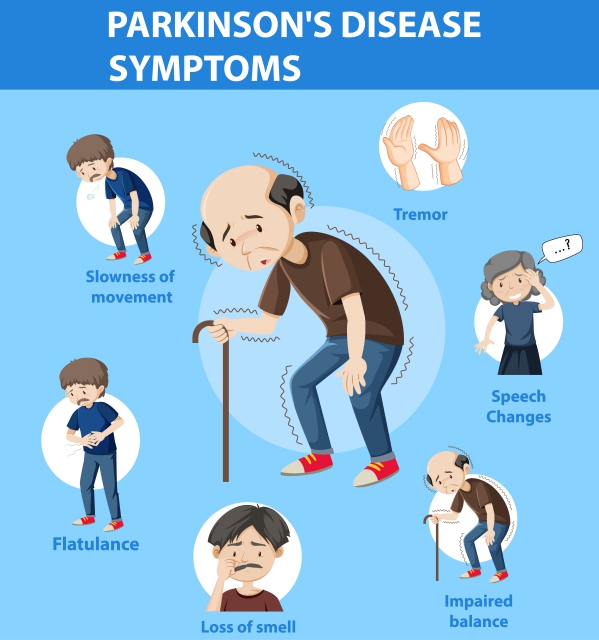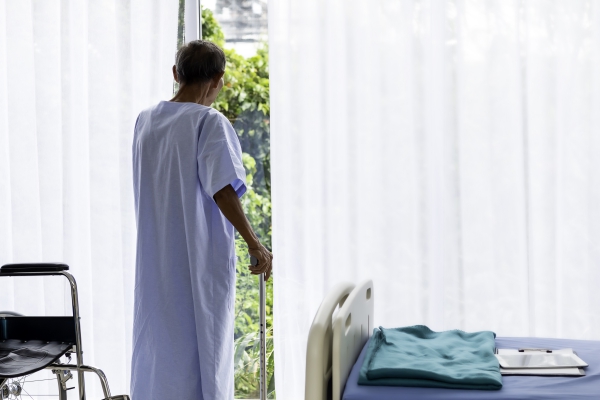What is Parkinson’s disease?
Parkinson’s disease (PD) is a condition in which there is a progressive degeneration of your nervous system leading to the appearance of abnormal movements. It affects primarily two structures found in the brain that are responsible for movement namely, the basal ganglia and the substantia nigra. These structures are involved in smooth and coordinated movements through the action of a substance in your brain called dopamine.
In PD, cells in your brain, particularly in your substantia nigra start to degenerate leading to a decreased amount of dopamine produced in your brain. The symptoms associated with PD start gradually and worsens with time especially if not diagnosed early. Each year, more than 50,000 people are diagnosed with PD in the United States.
This condition can impose a great burden on the individual affected as well as the family members or carers. To date, there is no definite cure for PD. However, with proper medications and follow ups, significant improvement of symptoms and quality of life has been reported.
Causes and risk factors of Parkinson’s disease
The exact cause of PD is not known. It is commonly considered as idiopathic. However, several factors are known to play a role in the development of the condition, namely:
- Genetics: Certain mutations in your genes can predispose you to PD. Researches are still being undertaken to investigate about the exact role of your genes in the development of PD.
- Sex: Men are more at risk of having PD compared to women.
- Age: The older you get, the more at risk you are to have PD. It most commonly occurs between 50-60 years old.
- Family history: If you have a close family member with PD, you are also at increased risk of having the condition too.
- Environmental exposures: Being exposed to toxins and certain other environmental factors can increase your risk of having PD.

Signs and symptoms of Parkinson’s disease
PD can present with an array of signs and symptoms in different people. Most of the time, the initial symptoms can be subtle and go unnoticed. The signs and symptoms include:
- Tremor: This often starts in your hands and fingers. Pill-rolling tremor is a typical type of tremor in which you repeatedly rub your thumb and index finger back and forth. The tremor may be present even at rest.
- Slowing of movements: You may notice that you take more time to perform a simple task as your movements are slower than usual. You will also begin to walk in smaller steps while dragging your feet on the ground.
- Muscle rigidity: Your muscles will start feeling stiff and can even be painful on movements.
- Speech problems: Speech may become soft and slurred. It can also become monotone.
- Fine movements: You may notice that you have difficulty to write and changes may be noticeable in your hand writing.
- Loss of arm swing: You may notice a loss of normal arm swing during walking.
- Imbalance: Recurrent falls is a common feature of PD as you may start to have balance problems.
- Posture changes: You may adopt a stooped posture.

PD can also be classified according to the Hoehn and Yahr stages as per the following:
- Stage 1: The disease affects only one side of the body and minimally impairs functioning.
- Stage 2: The disease affects both sides of the body without affecting your balance.
- Stage 3: The disease affects both sides of the body and causes mild to moderate functional impairment, however, you are still physically independent.
- Stage 4: The disease severely affects your daily functioning but you can still walk or stand without someone else’s help.
- Stage 5: You are bed ridden or wheelchair bound unless you are helped by someone else.

Making a diagnosis
There is no specific test available to make the diagnosis of PD. It is most commonly diagnosed only with the help of a good history and physical examination. If in doubt, your doctor may carry out some other tests to rule out other suspected medical conditions. These include:

- Magnetic Resonance Imaging (MRI): This imaging technique can be useful to exclude strokes or tumors that can cause the same symptoms as PD.
- Blood tests: These can be done to rule out blood abnormalities that can mimic PD.
Levodopa is a medication that works the same way as dopamine in your body. A levodopa-challenge test can be done to assess the likelihood of PD. In this test, a dose of the drug is administered and your doctor will assess the level of improvement of your symptoms. This can also be helpful to guide your treatment.
Treatment of Parkinson’s disease
Till now, PD cannot be cured. The management of the condition is targeted at symptom relief and should be initiated the earliest possible. It comprises of medications as well as lifestyle modifications.
Lifestyle changes that can be helpful include having proper amount of sleep, exercise and eating a balanced diet. Your doctor can also refer you to a speech therapist, occupational therapist or a physical therapist depending on your condition.
Medications cause significant improvement in PD symptoms. With time, your doctor may adjust your doses or prescribe other medications depending on your response to the treatment. These include:
- Carbidopa-levodopa: Levodopa is one of the main drugs used in the treatment of PD. It is converted to dopamine in your brain and performs the same function in improving movement. Usually, it is given in combination with carbidopa as the latter prevents the premature conversion of levodopa into dopamine outside the brain. Some side effects can include nausea or dizziness. Rarely, you may experience involuntary movements if taken at high doses.
- Dopamine agonists: These medications can also work in the same way as dopamine. However, they are less effective compared to levodopa. Some examples include bromocriptine, pramipexole and ropinirole.
- Anticholinergics: These are useful in alleviating muscle stiffness and rigidity. Examples include benztropine and trihexyphenidyl.
- Glutamate blocking drug: This can be used to counter possible side effects of levodopa such as involuntary movements. Amantadine is an example.
- Catechol O-methyltransferase (COMT) inhibitors: These can be used in combination with levodopa as they can prolong its efficacy.

Surgery is reserved as a last resort treatment if all of the above fail to show improvement. This include:
- Deep brain stimulation (DBS): In this procedure, electrodes are implanted in your brain by surgeons. Electrical impulses are sent via these electrodes to alleviate PD symptoms.
- Pump delivered therapy: A pump is placed near your intestines through surgery. A combination of levodopa and carbidopa is released through this pump.
Complications of Parkinson’s disease
The following complications can arise from PD in the long run:
- Dementia (memory problems)
- Difficulty swallowing which can present as drooling
- Chewing and eating problems which can be end up with choking
- Depression and labile mood
- Poor sleep or sleeping disorders
- Urine incontinence
- Constipation
- Fatigue
- Poor feeding
- Sexual dysfunction

Prevention of Parkinson’s disease
Since the exact cause is still unknown, it is difficult to know how to prevent it. Maintaining a healthy lifestyle with good eating habits and proper exercise may help to reduce your risk of having the disorder.
Prognosis of Parkinson’s disease
PD is a medical condition that greatly affects the quality of life of the patient and his/her surroundings. Its complications can further aggravate the situation and make it one difficult to live with. It is important to seek medical help and adhere to the treatment to improve the outlook and increase your life expectancy. With proper management, your quality of life can improve significantly.

Source:
J. Alastair, I. and Simon, M., 2016. Davidson’s Essentials of Medicine. 2nd ed. London: ELSEVIER.
Parveen, K. and Michael, C., 2017. Kumar & Clarks Clinical Medicine. 9th ed. The Netherlands: ELSEVIER.
Hauser, R., 2020. Parkinson Disease
Grimes DA, Lang AE. Treatment of early Parkinsons disease. Can J Neurol Sci. 1999 Aug. 26 Suppl 2:S39-44.



